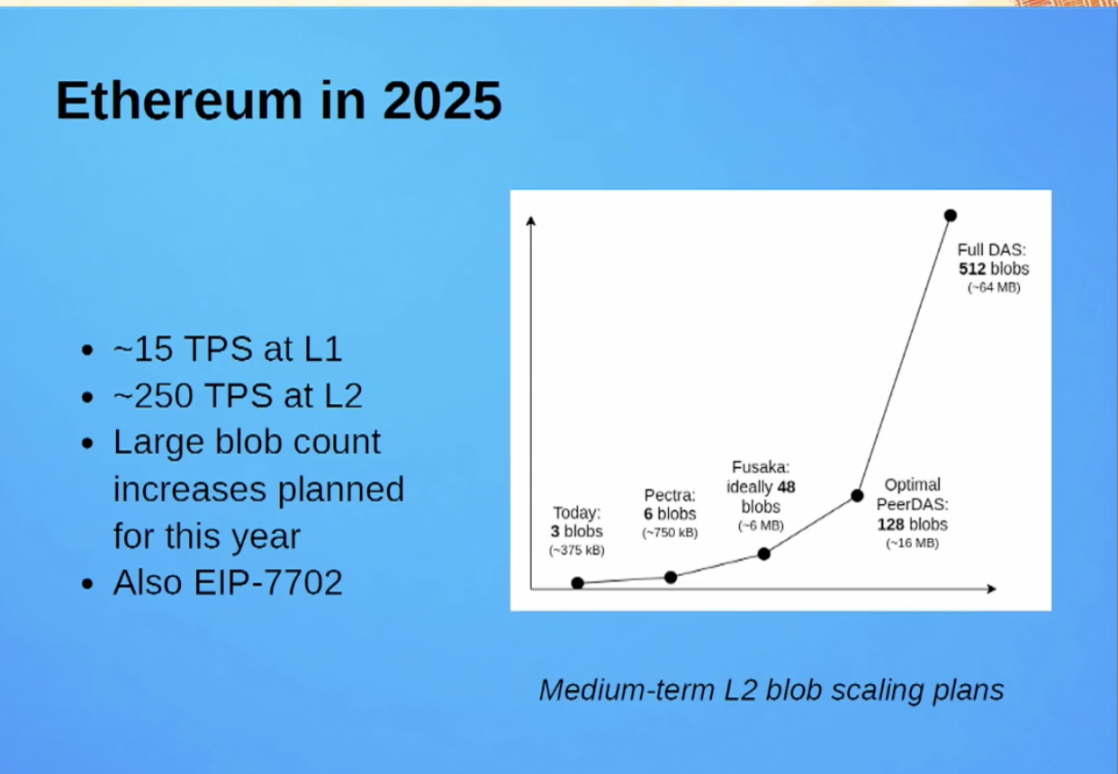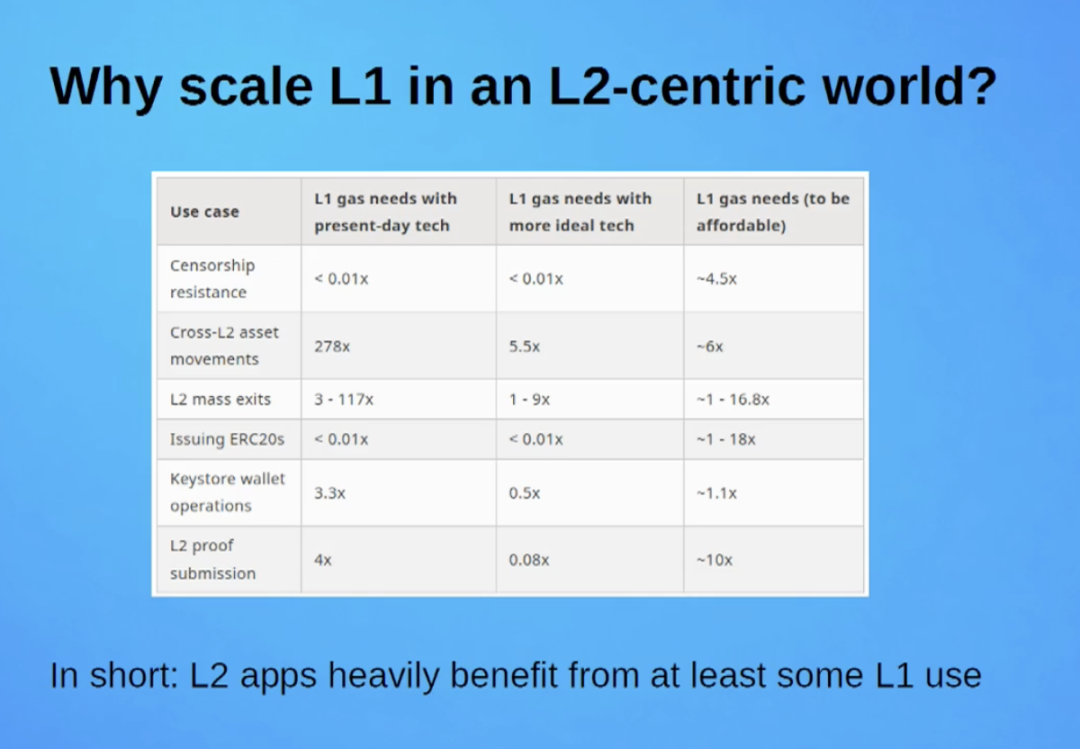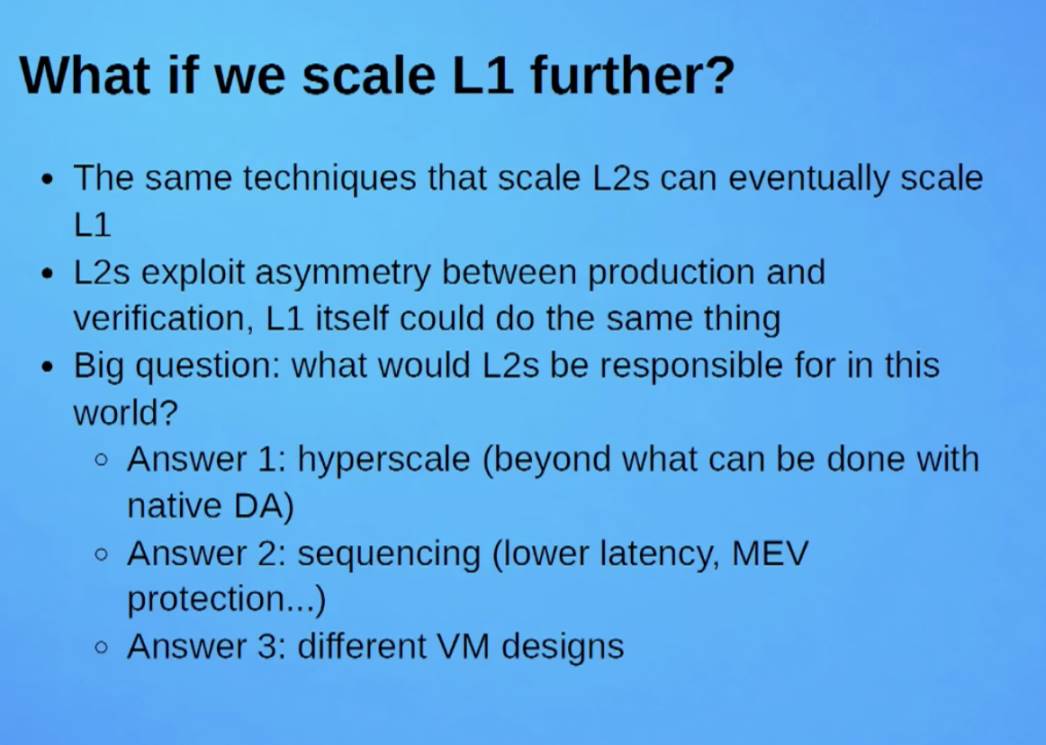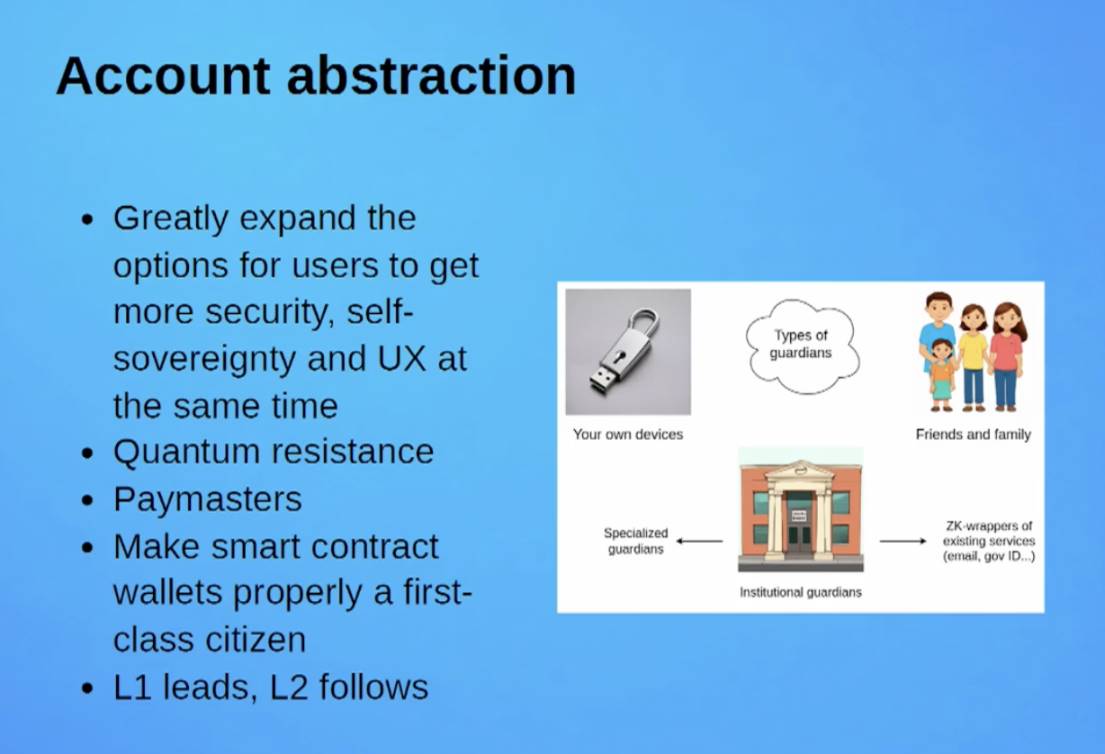Ethereum is working hard to prepare for mainstream large-scale applications.
Compiled by: KarenZ, Foresight News
On April 9, at the "2025 Hong Kong Web3 Carnival" ETHAsia 2025 event, Ethereum founder Vitalik Buterin delivered a keynote speech titled "The Future of Ethereum L1," focusing on key topics such as scalability improvements for Ethereum L1, future planning and technological upgrades, the collaborative development of L1 and L2, and the impact of account abstraction on user experience.
Vitalik first analyzed the current state of Ethereum, noting that the throughput of L1 is currently 15 transactions per second (15 TPS). The gas limit has recently been raised to 36 million, which is about six times higher than it was a decade ago. Meanwhile, the throughput of L2 has reached approximately 250 TPS, showing significant progress in scalability.

The upcoming Pectra upgrade will increase the Blob capacity from 3 to 6. Currently, 3 Blobs are about 375kb, generating 375 kb of data every 12 seconds, which corresponds to about 20kb per second, equating to a TPS of around 250; if the Blob capacity increases to 6, TPS is expected to rise to 500. However, the expansion of Blob capacity largely depends on the Fusaka upgrade, which is expected to be implemented in the third or fourth quarter of this year. Ideally, the Fusaka upgrade could increase the Blob capacity to 48; if DAS is fully realized, the Blob capacity could reach 512, potentially allowing Ethereum L2's TPS to rise to tens of thousands.
Additionally, EIP-7702 has also made significant progress, which is essentially the first step towards account abstraction, enabling accounts to possess greater intelligence and security.
Of course, the expansion of Ethereum L1 is equally essential. Even if users widely adopt L2 in the future, L1 will still need to perform many critical functions. Especially when L2 experiences failures, L1 needs to provide corresponding remedies or support users in large-scale exit operations.

This means that although L2 is developing rapidly, enhancing the scalability of L1 remains crucial for achieving censorship resistance and cross-L2 asset transfers. So, what changes can we expect if L1 is further expanded?
Scalability technologies applied to L2 can also be used for L1 in the future;
L2 leverages the asymmetry between production and verification, and L1 itself can also draw on this idea;
In such a world, what responsibilities will L2 take on? 1. Hyperscale (beyond the level achievable by native DA); 2. Ordering (lower latency, MEV protection…); 3. Different virtual machine (VM) designs.
In other words, L1 can learn from L2's scalability technologies, while L2 continues to focus on hyperscale transaction processing and the experimental application of new technologies.

Vitalik stated that from a short-term planning perspective, a series of proposals are expected to be implemented in 2026. Through these proposals, Ethereum is expected to significantly increase the gas limit while safely achieving this goal without compromising the decentralization of nodes. The proposals for 2026 currently include:
Block-level access lists (allowing for parallel I/O);
Delayed execution;
Multi-dimensional calldata gas;
Repricing;
EIP-4444 (historical data expiration): no longer requiring every Ethereum node to store Ethereum's historical records, but instead using a peer-to-peer network and allowing historical data to be stored in a more distributed manner;
FOCIL.

Vitalik also summarized the many advantages that account abstraction can bring, including:
Enhanced security and user experience;
Quantum attack resistance;
Paymaster: allowing others to help pay gas fees or pay gas fees with tokens other than ETH;
Native support for smart contract wallets;
L1 dominance, with L1 following up.

Additionally, through technologies like social recovery and guardians, Ethereum will provide more decentralized identity verification and asset control solutions.

In other areas, Ethereum is also actively exploring enhancements to L1 privacy features, EVM upgrades, protocol cleaning/simplification, consensus layer quantum resistance improvements, protocol security attributes and simplification optimization, as well as slot time reduction.
Overall, we need to improve L1, improve L2, and think about the diverse development paths for Ethereum, including AI-based approaches, to enhance the application layer and truly drive the development of the Ethereum ecosystem. Ethereum is working hard to prepare for mainstream large-scale applications, with the ultimate goal of making Ethereum L1 the core of the "world computer," supporting diverse applications with high security and efficiency.
免责声明:本文章仅代表作者个人观点,不代表本平台的立场和观点。本文章仅供信息分享,不构成对任何人的任何投资建议。用户与作者之间的任何争议,与本平台无关。如网页中刊载的文章或图片涉及侵权,请提供相关的权利证明和身份证明发送邮件到support@aicoin.com,本平台相关工作人员将会进行核查。




